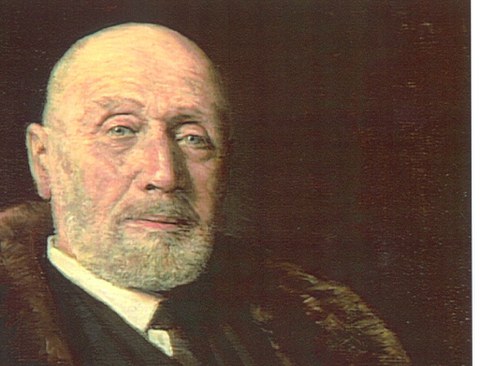Prof. Hubert Heinrich Engels
Hubert Engels made a significant contribution to the development of hydraulic engineering: from empirical observations to a science, using and developing model testing to find optimal engineering solutions. In 1898, he founded the world's first permanent river engineering laboratory at the Royal Saxon Technical University.
The unstoppable technical progress at the threshold of the 20th century also led to major tasks and technical challenges in the field of hydraulic engineering with regard to the design of hydraulic structures. The fact that civil engineers were increasingly able to meet these requirements was due in no small part to Hubert Engels, who, as Professor of Hydraulic Engineering at the Royal Saxon Technical University, took a decisive step on the path of hydraulic engineering and hydromechanics from an art based on experience to a science by commissioning the first permanent river engineering laboratory and using it for his research. Hubert Engels was born in 1854, studied civil engineering in Berlin and Munich and gained extensive practical experience on numerous hydraulic engineering projects of the time. In 1887, he became Professor of Hydraulic Engineering in Braunschweig (Brunswick), before accepting the call to Dresden three years later.
Hubert Engels was particularly devoted to the study of water movement in a river course, the interaction between water and riverbed, and the transport of solid matter. Based on his practical experience and keen observation of nature, Engels described a river’s hydraulic processes with astonishing perfection as early as 1893 in a contribution to an international engineering conference in Chicago.
His search for knowledge in this field and his talent for capturing and understanding flow phenomena through observation led him to scale down stretches of rivers and construct them as models in order to observe flow phenomena more comprehensively.
In Dresden, Engels first began experiments in the Zeuner Laboratory at the Technical University, which became widely known with his publication on the protection of river piers from undercutting. In 1898, Engels was able to put the first permanent hydraulic engineering laboratory into operation in the basement of an old TH Dresden building (destroyed in 1945). The laboratory was mainly used for experiments with moving sediment. When a campus was built in the southern suburbs as part of the university's expansion, the laboratory moved to the basement of the civil engineering building in 1913, where it remains today.
Professor Engels was a part of the hydraulic engineering faculty in Dresden from October 1, 1890 until his retirement in 1924, but continued to participate in many research projects and model tests thereafter, especially at the Hydraulic Engineering Experimental Station in Obernach.
In 1940 Professor Hubert Engels was the first winner of the Honorary Membership Award of the International Association for Hydro-Environment Engineering and Research (IAHR): https://www.iahr.org/index/dawards/1.

